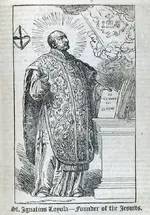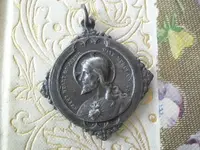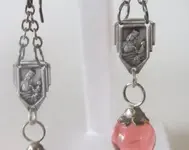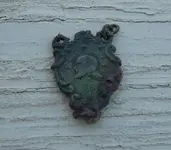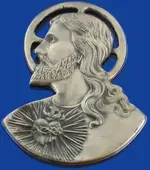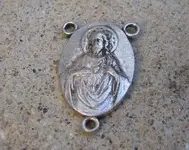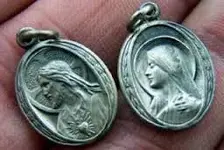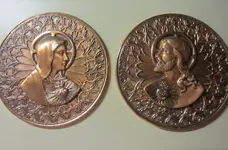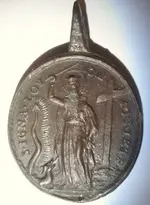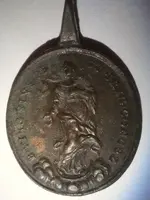Hola,
When Chagy displayed the modern medal showing Christ (thank you Chagy!), it became evident that the picture on the artifact was of Jesus and not St. Ignatius of Loyola. As one can see, the image exhibits a cruciform halo. This is a cross of three lines stretching beyond the halo which represents the Holy Trinity, especially Christ. In Medieval and Baroque art, the Virgin Mary was seen with a plain halo or a circle of stars.
I was under the assumption that the Caravaca cross, in general, was a large pendant. I apologize, RELICDUDE07, for I should have asked about its size. Sure, if the cross was tiny, it could have hung as an additional medal on a rosary, as Ivan so graciously concluded. If it was bigger in dimensional size, an inch or more, it most likely belonged on a neck chain.
I asked Hangingfor8 about his artifact locality because of my curiosity. I have a similar medal, almost identical, that was discovered on Douglass Beach (area of the 1715 fleet), although mine shows the Jesuit, St. Francis Xavier. Along with my wedding ring, I treasure it above all things. As a matter of fact I will be getting the medal officially blessed soon, which means in our Catholic faith, it could never be sold. That’s fine with me since I plan on taking it to my deathbed!
Anyways, since it brings me so much joy and inspiration, I spent much time researching these particular kinds of medals dating back to the 17[SUP]th[/SUP]-18[SUP]th[/SUP] centuries. They were mainly meant for personal devotion, and not for trade. People, religious or laymen, chose their own beloved saint to have on the pendants. Did priests of a specific order only carry items with saints who were of the same order? No, it all came down to personal preference, and the age of a saint’s popularity played a role sometimes.
Laura J
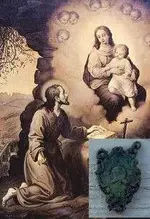 Found a artifact & trying to look into could it have been 1 from the De luna visit to the Florida area in 1559.Also if anyone has any info on was it more like a salvage attempt for the 1554 wrecks?? I know the ships had 1 salvage a year or so later ..But any info on if they came back a few years later to collect the 57,000 pounds of silver & some gold still on the 1554 Texas wreck sites
Found a artifact & trying to look into could it have been 1 from the De luna visit to the Florida area in 1559.Also if anyone has any info on was it more like a salvage attempt for the 1554 wrecks?? I know the ships had 1 salvage a year or so later ..But any info on if they came back a few years later to collect the 57,000 pounds of silver & some gold still on the 1554 Texas wreck sites ??The main reason i ask is some of the 1554 splash ingots have turned up in the area,indian salvage or did deluna have any success
??The main reason i ask is some of the 1554 splash ingots have turned up in the area,indian salvage or did deluna have any success
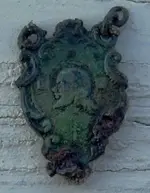
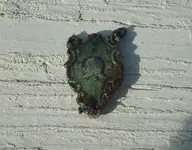 View attachment 794968View attachment 794968
View attachment 794968View attachment 794968